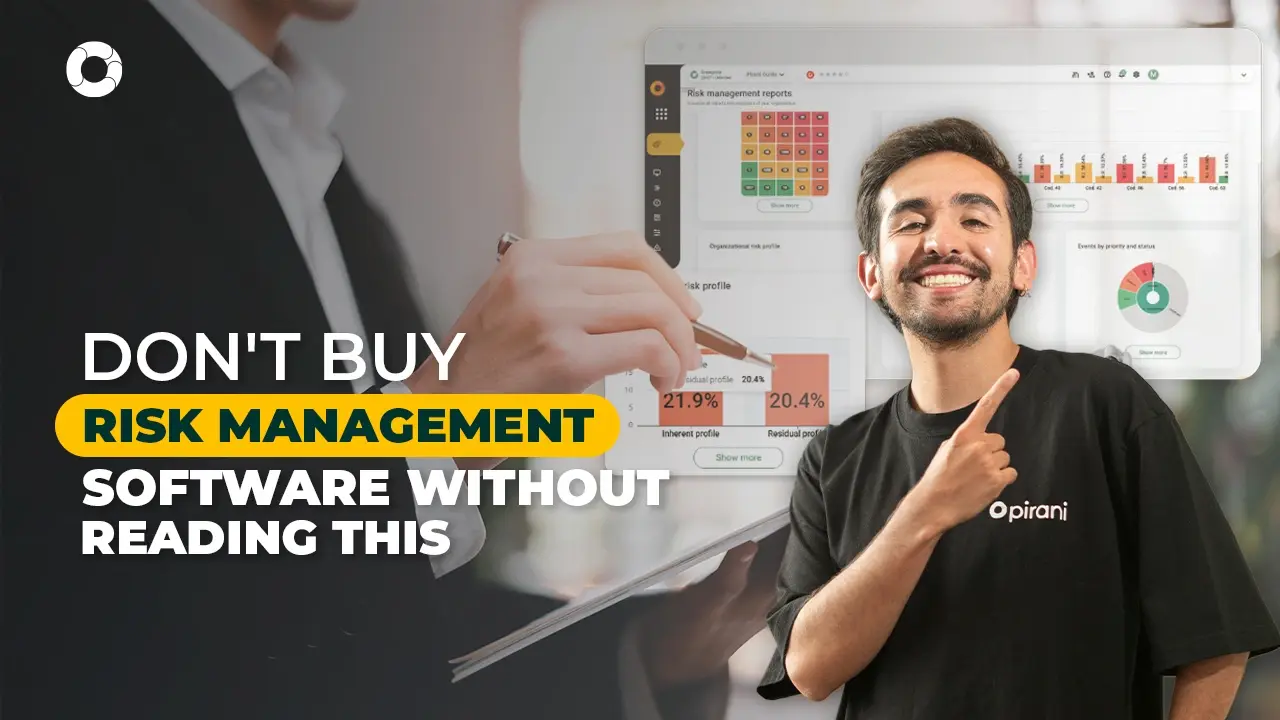9 Essential Risk Management Strategies for Business Success

Did you know that 41% of businesses reported experiencing three or more critical risk events in 2022 within their risk management process?
In the realm of business, the significance of risk management cannot be overstated. It serves as the bedrock upon which organizational resilience and sustainable growth are built.
Your business needs risk management strategies to safeguard and continue your business operations in a stable way by identifying, assessing, and mitigating potential risks.
In this article, we will explore nine essential risk management strategies meticulously crafted to fortify businesses against diverse risks, ensuring a resilient framework for sustained success and growth.
These strategies encompass a spectrum of approaches, from risk identification to mitigation, providing a comprehensive guide for navigating potential challenges while optimizing opportunities for business advancement.
9 Essential Risk Management Strategies for Business Success
Navigating through the intricacies of business risks demands a comprehensive approach. Here, we delve into nine indispensable risk management strategies tailored to fortify organizational resilience and pave the way for sustained success and growth.
1. Risk Identification
Early recognition of risks allows organizations to proactively assess, strategize, and implement measures to mitigate or leverage these risks to their advantage.
By recognizing risks in their infancy, organizations can develop tailored strategies to navigate uncertainties, minimizing their impact on operations. Moreover, it allows for the allocation of resources toward risk mitigation strategies, ensuring proactive rather than reactive responses.
Some techniques for effective risk identification include:
- Brainstorming encourages open discussion, enabling the exploration of various scenarios and vulnerabilities that might otherwise remain unnoticed.
- SWOT analysis allows for identifying strengths and weaknesses within their operations, as well as external opportunities and threats present in the market or industry landscape.
2. Risk Analysis and Assessment
This stage aims to evaluate the potential impact and likelihood of occurrence for each identified risk, providing a foundation for informed decision-making and prioritization of risk responses.
Methods for analyzing risks can be broken into two types:
- Qualitative Risk Assessment: This method involves assigning descriptive labels such as low, medium, or high to risks based on their impact and likelihood. Some methods include risk matrices, risk heat maps, and risk scoring systems.
- Quantitative Risk Assessment: This involves assigning numerical values to risks, often involving statistical and mathematical models. It measures risks using data-driven analysis, calculating probabilities, potential losses, and expected monetary values associated with each risk.
3. Prioritizing Risks
Prioritization involves assessing and ranking risks based on their potential impact and likelihood of occurrence, allowing businesses to allocate resources efficiently toward managing the most pressing risks.
Potential impact could include financial losses, operational disruptions, damage to reputation, regulatory fines, or any other adverse effects on business objectives. Risks with a higher potential impact are typically prioritized for immediate attention.
Whereas the likelihood of occurrence assesses the probability or frequency of a risk event happening, and is often assessed by looking at historical data, industry trends, and market conditions.
The risk matrix is one of the most popular tools used to assess and prioritize risks.
Source: SafetyCulture
By plotting risks within the matrix, organizations can visually identify and classify risks into categories such as high, medium, or low risk.
4. Risk Response Planning
Organizations must select appropriate responses that align with their risk appetite and objectives. The primary strategic risk response strategies include avoidance, mitigation, risk transfer, and acceptance.
- Risk Avoidance involves taking proactive measures to eliminate or avoid the risk entirely.
- Risk Reduction/Mitigation aims to reduce the probability or impact of a risk.
- Transfer involves shifting the potential impact of a risk to a third party, such as taking on insurance policies with trusted insurance companies.
- Risk Acceptance/Retention involves acknowledging the existence of a risk without taking specific action to address it actively, often done with common risks.
Creating a comprehensive risk response plan involves customizing strategies based on the nature, severity, types of risks identified (internal vs. external risks), and other risk factors.
The best risk management plan is one that’s aligned with the organization’s risk management objectives, ensuring that contingency plans are consistent with the organization's overall goals and strategies, even in the face of new risks.
5. Implementing Risk Controls
Controls are measures or initiatives put in place to mitigate, reduce, or manage risks to an acceptable level. They act as safeguards, helping organizations protect against potential threats and vulnerabilities.
Implementing risk controls can help manage your risk exposure by:
- Reducing the probability or impact of identified risks.
- Ensuring adherence to regulatory requirements, industry standards, and internal policies.
- Bolstering organizational resilience by strengthening its ability to withstand disruptions.
Some examples of risk control measures include:
- Financial risk controls such as diversifying investments, setting risk limits, conducting regular audits, and implementing hedging strategies.
- Operational risk controls include implementing stringent internal controls, regular monitoring of processes, creating backup systems, and conducting employee training to minimize errors.
- Information/Cybersecurity controls such as encryption of sensitive data in information systems, regular security updates, access controls, and intrusion detection systems.
- Supply chain risk controls such as establishing alternative suppliers, conducting due diligence on suppliers, and creating contingency/business continuity plans for supply chain disruptions.
In fact, almost 75% of organizations have an incident response plan in place, with 63% regularly testing their plans.
6. Continuous Monitoring and Review
Monitoring risks and periodic reviews are integral aspects of an effective risk management plan.
They ensure that risk management activities remain relevant, adaptive, and aligned with organizational objectives and changing risk landscapes.
Popular approaches for regular reviews include:
- Periodic risk assessments
- Using Key Performance Indicators (KPIs) and risk metrics
- Feedback mechanisms
- Conducting scenario planning and stress testing
7. Communication and Reporting
Effective communication and transparent reporting ensure that stakeholders are well-informed about risks, their potential impact, and the strategies in place to manage them.
Some key strategies to keep in mind are:
- To communicate risk-related information in a clear, understandable manner to all stakeholders by using plain language and avoiding technical jargon.
- Maintaining open channels of communication to foster a culture of transparency and continuous improvement.
- Customizing messages according to the needs and interests of various stakeholders.
8. Compliance and Regulatory Consideration
Organizations must align their risk management strategies with applicable laws, regulations, industry standards, and best practices to avoid potential penalties, legal issues, and reputational damage.
Make sure you:
- Identify and comprehend the relevant laws, regulations, and standards pertinent to your organization’s industry and geographical locations.
- Ensure risk assessments encompass compliance risks and that controls are implemented to mitigate these specific risks.
- Conduct regular compliance audits to assess adherence to regulations and identify areas that need improvement or corrective actions.
- Maintain comprehensive documentation of risk management activities using compliance management software and audit results.
9. Cultivating a Risk-Aware Culture
Finally, it’s important to build a robust risk-aware culture. This fosters an environment where all team members understand the importance of risk management and can contribute to a risk-aware mindset across all levels.
Building a company culture that understands and values risk management involves:
- Strong support and commitment from top-level management with leaders that actively promote and advocate for risk management
- Clearly communicating the importance of risk management and each employee’s role in identifying, reporting, and mitigating risks
- Encouraging and empowering employees at all levels to participate
- Recognizing and rewarding the ones that contribute the most
Simplify Your Risk Management with Pirani
Now that you know mastering your risk management is pivotal, what comes next?
Our platform streamlines and integrates risk management strategies, offering a holistic view that empowers businesses to navigate risks confidently.
With Pirani, you can:
- Seamlessly identify, categorize, and prioritize risks with advanced analytical tools.
- Align effortlessly with global standards and regulations, ensuring compliance.
- Craft precise, adaptable risk response strategies to your organization’s needs.
Are you ready to empower your business?
You May Also Like
These Related Stories

6 Practical Examples of Risk Management in Action

Risks that may arise in an internal audit

What should you ask a Risk Management Software provider?

5 tips for avoiding financial fraud

Know the components of the internal control of a company

No Comments Yet
Let us know what you think